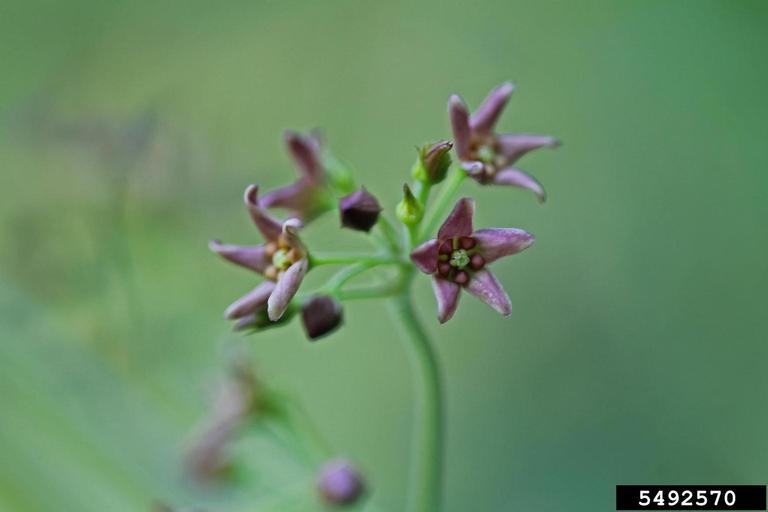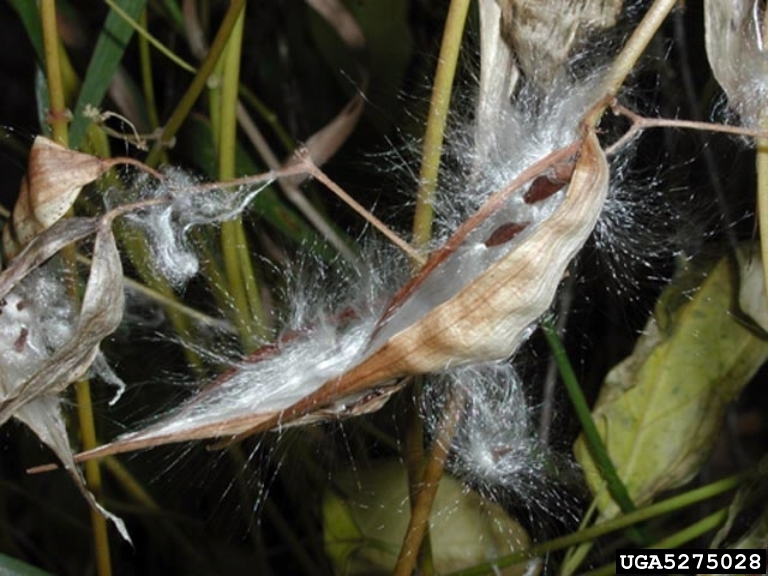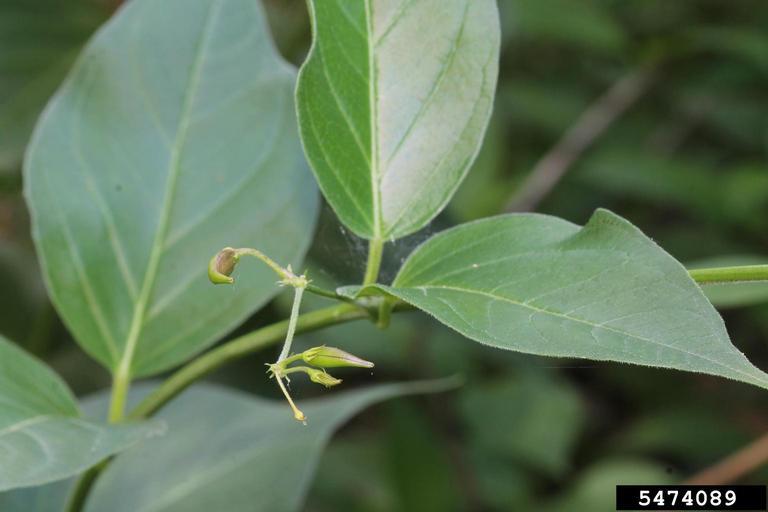|
Having trouble viewing this email? View it as a Web page.
July 3, 2023
July Weed of the Month: Pale swallow-wort
There is concern that pale swallow-wort has a negative impact on monarch butterflies as the plant is toxic to many insect larvae
Julia Dellick, Minnesota Department of Agriculture
Pale swallow-wort (Cynanchum rossicum) is a noxious weed; an herbaceous perennial vine that can grow up to 7 feet long. The leaves are oval to heart-shaped with a pointed tip, shiny, and medium green to yellow. When in bloom, pale swallow-wort has clusters of pale pink to reddish-brown flowers that are small and star-shaped with five petals.
 Pale swallow-wort flowers are star shaped and form in clusters. They range in color from pale pink to reddish-brown. bugwood.org
Click here to download the photo.
This plant is tolerant of shade, sun, and a variety of soil conditions, and is generally found in disturbed areas including old fields, woodlands, and brushy areas. The seeds can be spread by wind, which results in long-range dispersal. Pale swallow-wort can also spread by mowing or soil tillage that breaks up root pieces and moves them to new locations.
 The long and slim seed pods contain seeds that are easily spread by wind. Bugwood.org
Click here to download the photo.
Pale swallow-wort can form dense and extensive patches that suppress native vegetation. This disrupts local ecosystems by reducing species diversity and wildlife habitat. Infestations can eventually cover several acres of land and the tangled vines form impenetrable thickets. Often, the vines are not noticed until they are well established and difficult to control.
There is concern that pale swallow-wort has a negative impact on monarch butterflies as the plant is toxic to many insect larvae. Since pale swallow-wort is in the milkweed family, female monarchs will lay their eggs on pale swallow-wort, but they have a strong preference for common milkweed. However, pale swallow-wort can displace common milkweed, reducing prime habitat for monarchs. Pale swallow-wort is also suspected to be toxic to mammals, including livestock.
 Pale swallow-wort has shiny, yellow to green leaves that are ovular or heart shaped with a pointed tip. The plant forms small buds before flowering. bugwood.org
Click here to download the photo.
Originating from southwest Russia and Ukraine, pale swallow-wort was introduced to the United States in the late 1800’s as an ornamental plant. Since then, the plant has been found growing in some eastern and Midwestern states and the Canadian provinces British Columbia, Ontario, and Quebec. In 2020, two populations were discovered in Scott County. Both populations are documented to be reproducing and spreading into adjacent areas.
In Minnesota, pale swallow-wort is classified as a Prohibited-Eradicate Noxious Weed, and all above and below ground parts of the plant must be destroyed. Removal via mowing is not recommended as it can cause seed dispersal. Additionally, no transportation, propagation, or sale of this plant is allowed. Failure to comply may result in an enforcement action by the county or local municipality.
If you find suspected pale swallow-wort in Minnesota, please report it via EDDMapS or Report a Pest. Make sure to include identifying characteristics in photos and record its exact location with either an address, or the location’s GPS coordinates. For more information on these species, visit the MDA’s Noxious Weed List webpage.
MEDIA: For more information on Weed of the Month, contact Brittany Raveill, MDA Communications, at brittany.raveill@state.mn.us or 651-201-6131
|